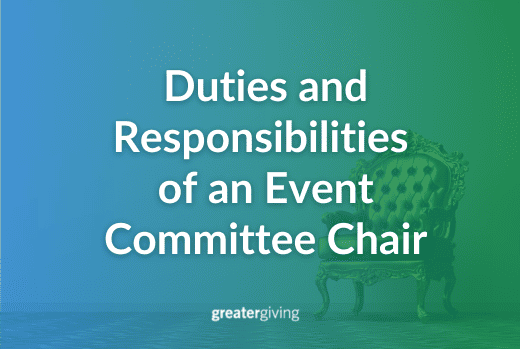
At the forefront of this team is the Event Committee Chair, a pivotal role responsible for orchestrating successful fundraising events.
In this article, we will delve into the job description, purpose, and seamless transitions when passing the baton to a new Event Committee Chair.
Purpose of the Event Committee Chair
The primary purpose of an Event Committee Chair is to ensure the smooth execution of fundraising events for the nonprofit organization. They serve as the driving force behind the event, leading the committee in achieving predetermined goals, raising awareness, and creating memorable experiences for attendees.
Job Description:
As the leader of the event committee, the Event Committee Chair plays a vital role in planning, coordinating, and executing fundraising events for nonprofit organizations. They are responsible for overseeing all aspects of the event, from conceptualization to post-event evaluation.
Key duties may include:
- Strategic Planning: Developing event goals, objectives, and strategies to ensure alignment with the nonprofit’s mission and fundraising objectives.
- Committee Formation: Recruiting and assembling a dynamic and diverse committee that possesses the skills and expertise necessary for successful event planning.
- Event Budgeting: Collaborating with the committee and nonprofit leadership to establish a realistic budget that encompasses all necessary expenses, while maximizing revenue generation.
- Vendor Management: Selecting and coordinating with vendors, such as venues, caterers, entertainment, and suppliers, to secure services. It also includes budget management and seamless event execution.
- Fundraising Strategies: Working closely with the committee to develop innovative fundraising ideas, sponsorship opportunities, and effective marketing and promotional campaigns.
- Logistics and Operations: Overseeing event logistics, including registration, ticketing, seating arrangements, audio-visual requirements, transportation, and event flow.
- Evaluation and Reporting: Assessing the event’s success by analyzing key metrics, gathering feedback, and preparing post-event reports to inform future planning and improvement.
Tenure and Committee Management:
The ideal tenure for an Event Committee Chair depends on several factors. Factors include the complexity of the event, committee size, and the organization’s culture. Typically, chairs serve for one to three years. Serving for a limited time period provides continuity and stability while allowing fresh perspectives and ideas to be introduced.
To effectively manage the committee, the chair should:
- Delegate Responsibilities: Assign tasks to committee members based on their skills, expertise, and interests. A great Chair empowers them to take ownership of their roles.
- Foster Collaboration: Encourage open communication, idea-sharing, and collaboration among committee members, promoting a positive and productive working environment.
- Regular Meetings and Updates: Schedule regular committee meetings to provide updates and address challenges. The primary goal is to ensure everyone remains on track towards event goals.
- Support and Recognition: Recognize and appreciate the efforts of committee members, acknowledging their contributions and providing support when needed.
Tips for Transitioning
To ensure a seamless transition when passing the baton to a new Event Committee Chair, the outgoing chair should:
- Plan for Succession: Identify potential successors well in advance and gradually involve them in the event planning process.
- Knowledge Transfer: Provide thorough documentation, including event files, contact lists, budget details. These items help the incoming chair hit the ground running.
- Transition Meetings: Facilitate transition meetings between the outgoing and incoming chairs to share insights, lessons learned, and best practices.
- Ongoing Support: Offer ongoing support and guidance to the new chair to ensure a smooth transition and continued success.
The role of an Event Committee Chair is vital to the success of nonprofit fundraising events.
By understanding their job description, as well as effective committee management and smooth transitions, nonprofit organizations can ensure their events reach their full potential. With the right person at the helm, events can not only generate vital financial support but also raise awareness and inspire lasting change.
